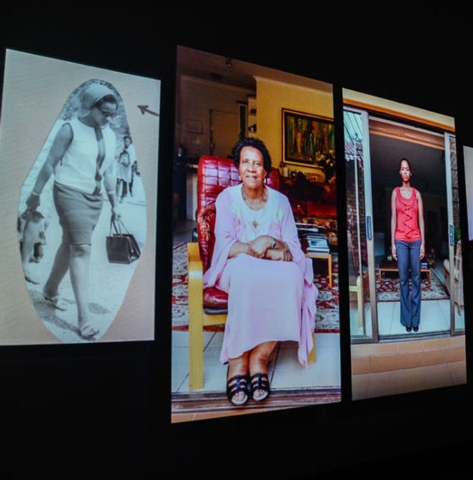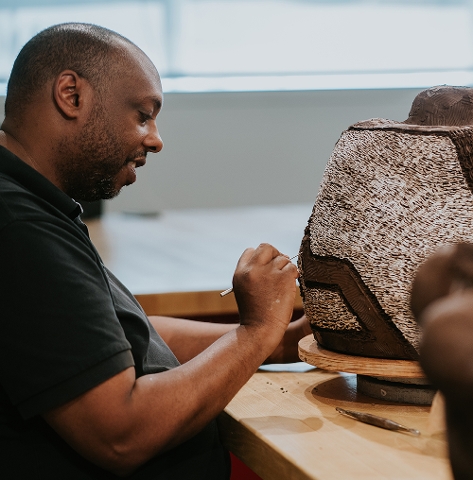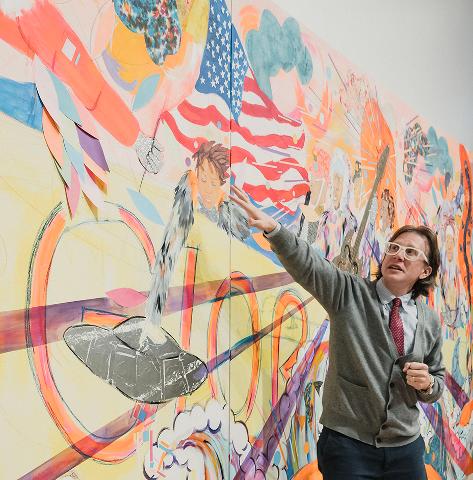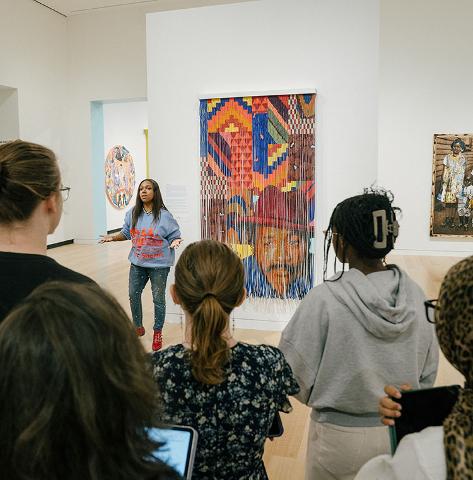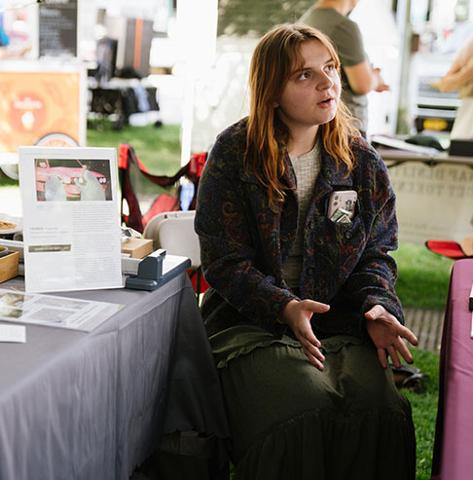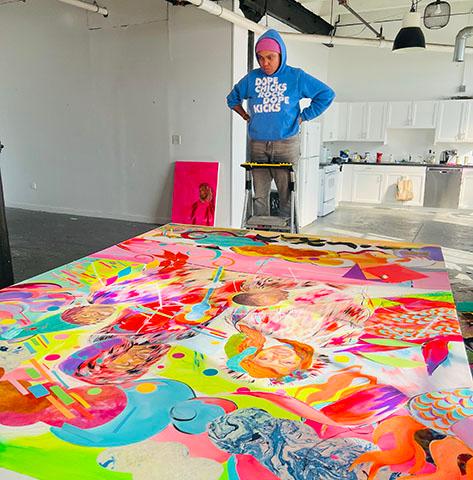The artist Julia Jacquette in her studio in the East Village. Krista Schleuter for The New York Times.
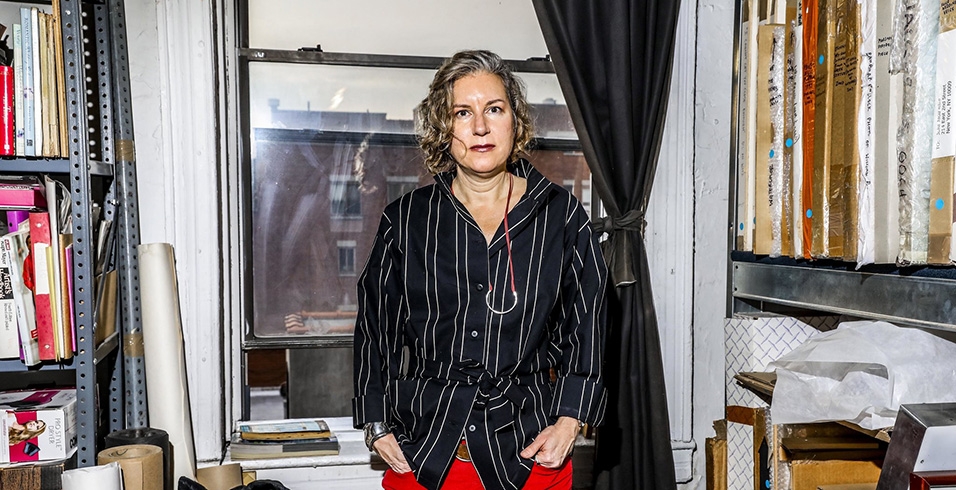
Growing up on the Upper West Side in the 1970s, the artist Julia Jacquette saw plenty of the urban decay for which that era is known.
Vacant lots filled stretches of Columbus Avenue near her family’s apartment, she recalled. But that gritty atmosphere was less influential for her than what was being built a block to the east, in Central Park. The city, teetering on the verge of bankruptcy, was somewhat improbably in the midst of a playground renaissance — one that informed Ms. Jacquette’s art in ways that she explores in a new autobiographical book, “Playground of My Mind.”
The typical city playground of that time was built as an afterthought, a corral for children, made of asphalt and chain-link fencing. The play equipment was sparse and isolated: a slide here, a seesaw there, a jungle gym. Nothing connected.
The new generation of adventure playgrounds, by contrast, was the product of careful planning, with linked play areas, often incorporating running water and sand. Most exciting for Ms. Jacquette was that the design allowed children to make up their own forms of play.
The concrete structures referred to ancient architectural forms: amphitheaters, pyramids and sunken gardens. And there was no one correct way for children to interact with them.
“Nothing was dictated,” Ms. Jacquette said. “There was nothing literal about them.”
Only recently did she make a connection between her childhood experience and her work, as she was completing “Playground of My Mind,” a project she’s pursued for 10 years. The book was published in concert with “Unrequited and Acts of Play,” a survey of her career that opened in February at the Wellin Museum of Art at Hamilton College in Clinton, N.Y.
Ms. Jacquette, 52, who is known for her paintings of commercial products and media images, is showing her paintings as well as the gouache originals that she made for the book.
Tracy L. Adler, the director of the Wellin Museum, who curated the exhibition, said that when taken together, the work prompts a question: “How does the play of our childhood inform who we are as adults?”
At a glance, it is hard to connect Ms. Jacquette’s paintings with the story of her book and the comics-inspired images that fill it. But it’s not the subject matter of her art that was affected, she said. The playgrounds gave her a way of working that she recognized only as she completed the book.
The playgrounds’ use of repetition and grids taught her a vocabulary, she said. “As soon as I was an adult making artwork, I gravitated toward those systems.”
Ms. Adler said: “In her paintings, she’s looking at media images, advertising, and how they present this idea of perfection. Whereas in the book she’s looking back.”
The book is her first narrative project, completed at Ms. Adler’s suggestion, and published by the Wellin.
Ms. Jacquette, who teaches art at the Fashion Institute of Technology, developed an early interest in these issues, in part because of her parents. Her father, William Jacquette, is an architect who collaborated on adventure playground designs. When she was 8, she joined him at the opening of the playground at Central Park West and West 100th Street.
Her mother, Janet Jacquette, worked as a librarian but held distinct views about design that left an impression. In the book, Ms. Jacquette recalls her mother’s dismissive response to a Christmas tree in the lobby of their building: “I believe less is more.”
The rise of the adventure playground, which is outlined in the book, was driven by architects like M. Paul Friedberg and Richard Dattner, who were the subject of a New York Times Magazine article in 1966 headlined “Putting the Play in Playgrounds.”
This movement, sparked by the parks commissioner Thomas Hoving, faced some resistance from traditionalists and defenders of the sanctity of Central Park’s green spaces. The whole saga was notable enough to provide the focus of at least a dozen other articles in The Times. (A 1967 editorial acknowledged that not all of the changes to Central Park then in progress were undesirable: “But it is essential that this new approach not get out of hand.”)
The shift was prescient in another way. Facing tightening city budgets, the adventure playgrounds were originally funded by wealthy donors, like the Lauder Foundation, which gave hundreds of thousands of dollars for the earliest projects.
About three decades later, the adventure playgrounds faced a new challenge: safety regulations. In the late 1990s, there was a push to replace them. Eventually that drive ended in a compromise, and the playgrounds were only modified, dialing down the adventure, perhaps, but satisfying city litigators.
Ms. Jacquette noted that her father was unsentimental when that time came. “He wasn’t all bent out of shape about it being changed,” she said. “He helped.”
She still treasures what remains of the original vision. “The architects who made these didn’t ever want to dictate play,” she said. “They offered the kids a vocabulary.”
“In a way,” she said, “I am still that kid.”


